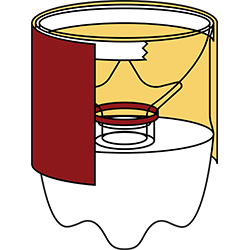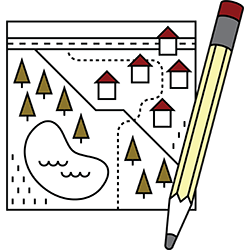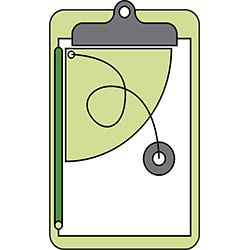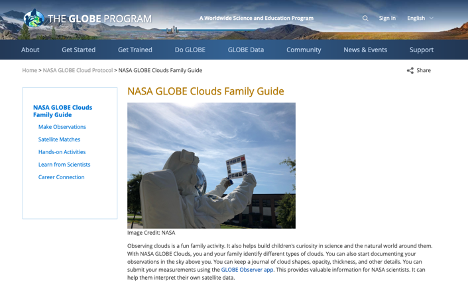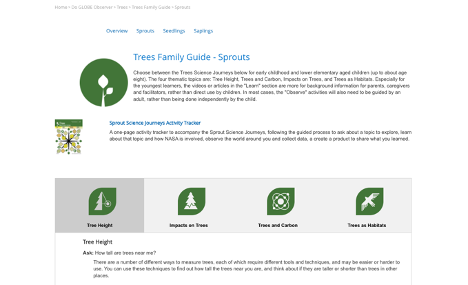Family Science - GLOBE Observer
Our Favorite GLOBE Observer Activities for Families
Shortlink to this page: https://observer.globe.gov/family-science
Following are activities that don’t require special equipment and use materials that can be found at home. These work well with families or groups of different ages and multiple generations. Explore, play, and build curiosity together about science and the environment!
Getting Started
GLOBE Observer requires you to create an account using an email address. Adults should supervise the use of the app by family members under 13.
- Download the app to a smartphone from the App Store or Google Play:
- Create an account using your email address.
- Check your email for your password.
- Sign in with your email and password. This login can be used on multiple devices.
Start by taking observations as a family in one place using all four GLOBE Observer tools: Clouds, Mosquito Habitat Mapper, Land Cover, and Trees. Your place can be as large or small as you choose: just outside your home, around your neighborhood, or in a nearby park or public space. Expand your observations to additional places as you visit extended family and friends. Always follow guidelines from your local officials, and only participate in GLOBE activities or use the GLOBE Observer app if it is safe to do so.
Then use the following activities to explore and discuss the science behind your GLOBE Observer observations.
Clouds
Activity: Cloud in a Jar | La nube en un frasco
Create a cloud in a jar using simple household materials and explore how clouds form.
Video Demonstration: https://youtu.be/s33puplDwf0
Safety
- Adult supervision required when handling matches
Adaptations and Suggestions
- Remember to get down on your child’s level to see the clouds and make observations from their vantage point.
- Ask your child to tell you what they see, "What do you see?" "What do you notice happening?"
- Prompt them to expand their observations using qualitative (e.g. What size, shape, color?) and quantitative (e.g. How many?) descriptors.
- Help your child extend their observations into things they can’t observe, but which help them to make richer observations.
- Older children: Have them expand their diagram of the water cycle in the jar to show cycling of water among land, ocean, and atmosphere (the hydrological cycle).
Questions to Prompt Discussion
Help your child extend their observations into things they can’t immediately observe, but which help them to make richer observations:
- Younger children:
- Does this remind you of other places where you have experienced condensation (for example, a bathroom mirror after a shower or bath) or evaporation (for example, a puddle outside that dries up when it is sunny)?
- Why do you think that happened?
- How is that similar to what happens when we create a cloud in a jar?
- How is it different?
- What do you think clouds are made of?
- What does this make you wonder?
- Older children:
- Is there a beginning or end for the hydrological cycle?
Why Clouds are Important to NASA
Clouds are essential to Earth’s climate. They are reservoirs of water that travel the globe, and determine how much heat from sunlight goes where: does it reach the ground, does it heat Earth’s atmosphere, or is it reflected back into space? Different types of clouds have different effects, and the amount of cloud cover is also important. Clouds are complex and constantly changing.
Several NASA satellites are dedicated to observing Earth’s clouds. But satellites in space only see the top of the clouds while people on the ground can see the bottom. By putting these two perspectives together we get a much more complete picture of clouds in the atmosphere and understanding their role in climate. Learn more about GLOBE Observer Cloud Science.
Going Further
- English: GLOBE Clouds Family Guide with tips and suggestions for how you and your family can participate with GLOBE.
- Spanish: La Guía para Familia de Nubes también está disponible en español, incluyendo vídeos con ejemplos de actividades.
- 2020 Community Cloud Challenge
Mosquito Habitat Mapper
Activity: Build a Mosquito Larvae Trap
Monitor the mosquitoes in your community by creating a DIY larvae trap.
Video Demonstration: https://youtu.be/bPBomfbLpWY
At the end of the video, students show their mosquito larvae traps
Safety
- Adult supervision required when cutting the bottle and netting.
- This trap is not for adult mosquitoes. When outdoors you should protect yourself from bites by wearing long sleeves and applying effective insect repellent.
Adaptations and Suggestions
- Remember to get down on your child’s level to see the mosquito habitats and make observations from their vantage point.
- Ask your child to tell you what they see, "What do you see?" "What do you notice happening?"
- Prompt them to expand their observations using qualitative (e.g. What size, shape, color?) and quantitative (e.g. How many?) descriptors. For example, You see some wiggly things in the water? What color are they? Are they bigger or smaller than your thumb? How many are there?
- Younger children: Provide pre-cut bottle and netting; supervise assembling. Provide examples (by a walk-around or photos) of a good trap location (shady, protected area). Check the trap together during the first few visits.
- Older children: Supervise cutting and construction of the trap. Allow them to determine the location for the trap; discuss the pros and cons of the decision; recommend moving the trap as needed.
Questions to Prompt Discussion
Help your child extend their observations into things they can’t immediately observe, but which help them to make richer observations:
- Where do you think mosquitoes come from?
- Do you notice mosquitoes in all seasons?
- Why do you think the mosquitoes would lay their eggs here?
- Where do you think the female mosquito goes after she lays her eggs?
- How long do you think it takes for her eggs to hatch?
- Do you think female mosquitoes lay their eggs all year long? Why or why not?
- Do you think female mosquitoes might like a certain kind of water more than another kind to lay her egg in?
- Do you think the baby mosquitoes have any predators? Which kinds of predators might they have?
Science Background
The “bait” in the water draws in the female mosquito to lay her eggs. When it rains, the eggs then fall through the mesh, but will not be able to escape if/when they reach the adult stage.
These traps work with different kinds of bait:
- The nutrients in rice water or pond water indicate to the female mosquito that this is a good place to lay her eggs.
- The carbon dioxide trail from sugar/yeast water can also lure in mosquitoes (similarly to being attracted to the carbon dioxide that people exhale).
- It is best if you cover the trap with black paper, black tape, or an old black sock. If the trap is dark, it will seem like a safe place for the female to lay her eggs.
Why Mosquito Habitats are Important to NASA
Mosquitoes can’t be seen from satellites in space. But the warm, moist conditions they prefer can be observed by NASA satellites. Climate and weather conditions can suggest to scientists where to expect spikes in mosquito populations during the year, but your mosquito observations at ground level can verify those population changes. By reporting possible mosquito habitats using the GLOBE Observer app, you are helping NASA scientists doing broad scale, satellite-based research with local ground-based observations. Learn more about GLOBE Observer Mosquito Science.
Going Further
The Mosquito Investigation Notebook and the companion guide with suggestions for parents and caregivers incorporates activities that build relevant background knowledge, confidence in independent learning and research, and engagement in science. Download the notebook, companion guide with suggestions for parents and caregivers, and additional investigations as they are released at: https://strategies.org/mosquito-notebook
Land Cover
Activity: Making a Map
Draw your own map. Plan out what area your map will show and what information it will include.
Video Demonstration: https://youtu.be/4a-FIRYzmMA
Safety
- Only map in areas which are safe from physical danger, and where you are permitted to be.
Adaptations and Suggestions
- Younger children: Suggest smaller, more tangible areas to map, like a room, the yard, the refrigerator.
- Older children: Find examples of maps to share (complexity based on age).
Questions to Prompt Discussion
Help your child extend their observations into things they can’t immediately observe, but which help them to make richer observations:
- What is the purpose of your map?
- What are the different things that you want to include in your map? How are these related to your map's purpose?
- What colors or symbols will you use, and what do they represent?
- What patterns do you notice in your map? Would changing the colors or symbols change what you notice? Why?
- How would your map change if you were looking at this from different perspectives or heights? For example from on the ground versus from above?
Why Land Cover is Important to NASA
Land cover is the base dataset for many areas of science, including hazard analysis for floods, fires and landslides, mapping wildlife habitat, and tracking the impacts of climate change. Even though land cover is familiar to everyone on the planet, the most detailed satellite-based maps of global land cover are still on the order of 100 meters [about 330 feet] per pixel. That means that a park in a city may be too small to show up on the global map. GLOBE Observer: Land Cover observations can fill in local gaps and contribute to consistent, detailed global maps. Learn more about GLOBE Observer Land Cover Science.
Going Further
- Google Earth Engine Time Lapses: Global, zoomable video that lets you see how the Earth has changed over 34 years (1984–2018). The majority of the images come from Landsat, a joint USGS/NASA program. Suggestion for use: Find an area of interest and play the video. Describe patterns and colors that you observe. How has an area changed? Remained the same? What might have caused changes? How do you think this area will change or stay the same in the future? Why?
- More GLOBE Observer land cover activities and resources
Tree Heights
Activity: Build a Clinometer
Build a simple and accurate paper clinometer and use it to calculate the height of trees. A clinometer is an instrument used for measuring the angle or elevation of slopes.
Video Demonstration: https://youtu.be/Ky6KhGLw1AU
Safety
- Please use caution when doing this activity since small objects (choking hazard) and sharp materials (scissors) are a part of this activity.
Adaptations and Suggestions
- Remember to get down on your child’s level to see the trees and make observations from their vantage point.
- Ask your child to tell you what they see, "What do you see?" "What do you notice happening?"
- Prompt them to expand their observations using qualitative (e.g. What size, shape, color?) and quantitative (e.g. How many?) descriptors.
- Help your child extend their observations into things they can’t observe, but which help them to make richer observations.
- Younger children: An adult should prep in advance and can build the clinometer with younger children.
- Older children: An adult should prepare a few things ahead of time:
- Use the tip of a pen or pencil to poke a small hole through the white circle.
- Cut out a piece of string about 5-6 inches long.
- Attach weight (metal washer, paper clip, or beads) to the string.
Questions to Prompt Discussion
Help your child extend their observations into things they can’t immediately observe, but which help them to make richer observations:
- Use the paper clinometer to measure the height of a tree(s), then measure tree height using the GLOBE Observer app. Have different family members do the same observations- Are the observations the same? Why or why not?
- Why would we use multiple ways to measure the same thing?
- Think about trees in your yard or neighborhood. Have they changed over the past year or seasons? How might that affect the observations you take with the clinometer or the GLOBE Observer app?
- Why do you think scientists need to know how tall a tree is?
Why Tree Height is important to NASA
Trees cool and moisten our air and fill it with oxygen and can help balance our carbon budget. Forests are considered one of the world’s largest banks for all the carbon emitted into the atmosphere through natural processes and human activities. Tree height is the most widely used indicator of an ecosystem’s ability to grow trees. Observing tree height allows NASA scientists to understand the gain or loss of biomass which can inform calculations of the carbon that trees and forests either take in from or release into the atmosphere. Tracking how trees are changing over time can help us estimate the number of trees that make up an area. Learn more about GLOBE Observer Tree Height Science.
Going Further
- More GLOBE Observer Tree Height activities and resources
- Earth Science with #NASAatHome: GLOBE Tree Height and ICESat-2
Visit the Clouds Family Guide and the Trees Family Guide for even more family-friendly activities.
Additional Resources for Science at Home










